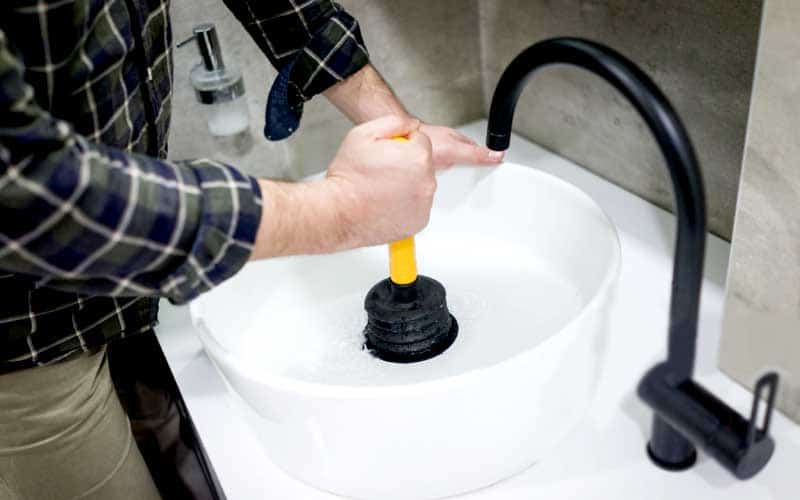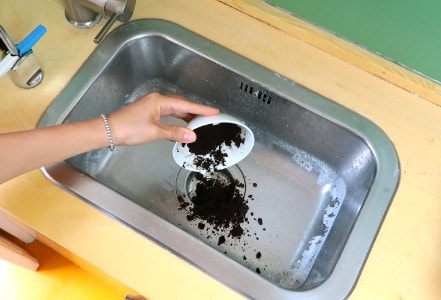Were you searching for advise around DIY Plumbing Fixes?

Blocked kitchen area sinks are one of the most usual water drainage concerns property owners deal with. And also what's more, it's a very uncomfortable and undesirable view. Think of mosting likely to the sink to do your recipes as well as finding out that the drain is obstructed as well as water can not move down quickly.
Many blocked drains are caused by food debris, oil, fat, and soap bits. They obstruct the sink as well as make it hard for water to drop the drain rapidly. While it is alluring to put a call through to the plumbing professionals, there are a couple of DIY hacks you could try initially prior to making that phone call.
In this short article, we will certainly be taking a look at five straightforward actions you can require to release your cooking area sink from blockages and also conserve you from the pain and also humiliation of managing a stopped up kitchen area sink.
1. Use Boiling Water
When faced with a clogged up sink, the first thing you ought to attempt is to put boiling thin down the drain. That is about one of the most straightforward remedy to blocked sinks and water drainages. Boiling water helps counteract the fragments and debris creating the clog, specifically if it's soap, oil, or oil particles, as well as in a lot of cases, it can flush it all down, as well as your sink will certainly be back to typical.
Since warm water could melt the lines as well as cause more damages, do not attempt this approach if you have plastic pipes (PVC). If you make use of plastic pipelines, you may want to adhere to making use of a plunger to obtain particles out.
Using this approach, switch on the tap to see just how water flows after putting hot water down the drain. If the clog persists, attempt the procedure once again. The obstruction might be a lot more relentless in some instances as well as call for even more than simply boiling water.
2. Maybe it's the Garbage Disposal
In most cases, the clog might be because of a clog in the disposal. Switching on the disposal should remove the clog, however it might mean that food fragments or various other compounds are stuck in between the blades if that is unsuccessful. You can attempt to unclog it by transforming the blades manually in a quote to release it. Please ensure not to stick your hands in the blades; they're sharp. Usage pliers rather.
You can check out the adhering to alternative to unclog your kitchen area sink if this does not work.
3. Attempt a Plunger
You can attempt utilizing a bettor if the trouble is not from the trash disposal. Plungers are standard home tools for this occasion, as well as they can come in useful if you utilize them appropriately. A flat-bottomed bettor is most suitable for this, however you can use what you have is a toilet bettor.
Comply with the list below simple steps to use the bettor properly:
Secure the drainpipe with a cloth and load the sink with some warm water
Place the bettor ready over the drainpipe as well as begin plunging
Check to see if the water runs freely after a couple of dives
Repeat the procedure up until the drainage is totally free
4. Sodium Bicarbonate and Vinegar
Instead of utilizing any kind of kind of chemicals or bleach, this method is much safer and also not harmful to you or your sink. Baking soda as well as vinegar are day-to-day home things used for many various other points, and they can do the method to your cooking area sink.
Firstly, remove any kind of water that is left in the sink with a mug.
Then put a great quantity of cooking soft drink away.
Pour in one mug of vinegar.
Seal the drain opening as well as allow it to opt for some minutes.
Pour hot water down the tubes to disappear various other persistent residue as well as particles.
Following this basic technique can suffice, and you can have your cooking area sink back. Repeat the process as much as you deem necessary to rid the sink of this particles totally.
5. Utilize a Hanger
This method is efficient and also ingenious, especially if you recognize and also maybe see what's causing the obstruction. Occasionally, the obstruction could be brought on by hair, jewelry, or significant portions of food fragments. If you have one can do the trick, utilizing a wire fabric wall mount or a plumber's snake. All you need do is correct the hanger to go down the drain while you thoroughly select the bits causing the clog.
Run warm water down the tubes after this to see just how successful you were.
Final Words
Trying these few tricks might save you the expenses of having a plumber check it. But oftentimes, a plumber is what we require. In cases where you find it hard to unclog the sink also after attempting all these approaches, it might be time to leave it to the experts.
Contact specialist plumbing companies to repair your drain problems and various other different home plumbing requirements.
Clogged cooking area sinks are one of the most common water drainage issues property owners encounter. Envision going to the sink to do your meals and also discovering out that the drain is obstructed as well as water can not move down conveniently.
They clog the sink as well as make it hard for water to go down the drain swiftly. When faced with a blocked sink, the first thing you should try is to put boiling water down the drain. Boiling water assists reduce the effects of the particles and also particles causing the clog, especially if it's oil, oil, or soap fragments, and also in numerous instances, it can flush it all down, and also your sink will certainly be back to normal.
How to Unclog a Kitchen Sink
Take the Plunge
Start your efforts by plunging. Use a plunger with a large rubber bell and a sturdy handle. Before getting to work on the drain, clamp the drain line to the dishwasher. If you don t close the line, plunging could force dirty water into the dishwasher.
Fill the sink with several inches of water. This ensures a good seal over the drain.
If you have a double sink, plug the other drain with a wet rag or strainer.
Insert the plunger at an angle, making sure water, not air, fills the bell.
Plunge forcefully several times. Pop off the plunger.
Repeat plunging and popping several times until the water drains.Clean the Trap
The P-trap is the curved pipe under the sink. The trap arm is the straight pipe that attaches to the P-trap and runs to the drain stub-out on the wall. Grease and debris can block this section of pipe. Here s how to unclog a kitchen sink by cleaning out the trap:
Remove as much standing water from the sink as possible.
Place a bucket under the pipe to catch the water as it drains.
Unscrew the slip nuts at both ends of the P-trap. Use slip-joint pliers and work carefully to avoid damaging the pipes or fasteners.
If you find a clog, remove it. Reassemble the trap.
If the P-trap isn t clogged, remove the trap arm and look for clogs there. Run the tip of a screwdriver into the drain stub-out to fetch nearby gunk.Spin the Auger
With the trap disassembled, you re ready to crank the auger down the drain line.
Pull a 12-inch length of cable from the auger and tighten the setscrew.
Insert the auger into the drain line, easing it into the pipe.
Feed the cable into the line until you feel an obstruction. Pull out more cable if you need to.
If you come to a clog, crank and push the cable until you feel it break through. The cable will lose tension when this happens.
Crank counterclockwise to pull out the cable, catching the grime and debris with a rag as the cable retracts.

As a keen person who reads on Common Household Plumbing Issues, I was thinking sharing that piece of content was really useful. Enjoyed reading our blog entry? Please share it. Help someone else find it. We value reading our article about Fixing Typical Household Plumbing Problems.
Reliable repairs? Dial.